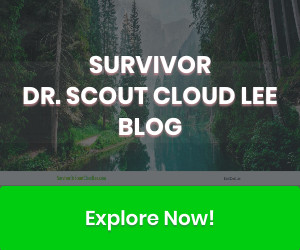Is it really fair to say, “I don’t trust that person”? Is it the total person that we choose to deny our trust? Or is it that we don’t trust certain behaviors the person displays? Said differently, we have learned to actually TRUST that person to consistently behave in certain specific ways, ways that may or may not serve our best practices or desired behaviors. Learning to TRUST people to “show up being themselves” requires much more of us as leaders than a blatant choice of “not trusting”. It requires that we assess all that we see, hear and experience and harvest the garden of others for behaviors that are useful for the whole of our teams, or those behaviors that will infect our team’s productivity and attitude. In other words, THE TRUST FACTOR allows us to TRUST everyone to be exactly who they are!
The career of Lance Armstrong lays in ruins. The seven times Olympian cyclist has been stripped of his medals, his endorsements, his leadership in his Livestrong Foundation, some of his closest friends, and his appeal as a global hero. In a matter of months Lance Armstrong has plummeted from Global Hero to Global Zero! His doping scandal seems to have cost him everything. The damage to this once trusted athlete may, in fact, be irreparable. Such is the price paid for “betraying an endowed trust”.
TRUST (or the lack of TRUST) is the second most reported challenge inside our CNDC teams (COMMUNICATION being the number one challenge). Obviously, trust is built on open, clear, concise, shared information. One of the greatest opportunities we have as leaders is to build a solid foundation that renders us a reputation as “a person to be trusted”. Phrases like “my word is my bond” or “you can take that to the bank” are easily said. However, they cost us our very lives to enlist the legends of support we need to lead effectively. We must aspire to be “Trustworthy” both as leaders and team players.
TRUST is not free! It requires extreme COMMITMENT. This level of commitment is not just the obvious commitment to Mission, Vision, and Purpose. Trust is all about keeping the “little commitments” every day: The commitment to arrive at work on time and when scheduled; The commitment to be prepared with timely, accurate information and reports; The commitment to listen; The commitment to “do what we say we’ll do”; The commitment to complete the communication loop by “getting back to people in a timely and professional manner”; The commitment to disengage gossip immediately; and the commitment to provide development with delegation.
TRUST is built slowly with great persistence and grit. It requires an addiction to follow-through, honesty, and diplomatic transparency. It requires mastery in the exchange of information that calms, inspires, educates and informs. As leaders, it is our calling to lead with integrity, valor and grit. Our teams and our teammates need to TRUST us to do what we say we’ll do, and then to do the “right thing”. By this we gain admiration, respect and, of course, TRUST.
Too often we divide people into groups of “those we trust” and “those we don’t”. However, at the end of the day “we can trust everyone”. WAIT! Before you put Pollyanna glasses on that statement, consider this slant on TRUST: At the end of the day, we can trust everyone to show up being exactly who they are! No matter what the situation, we all show up being ourselves. The point is this: Are we truly paying ATTENTION to the behaviors of those with whom we work and live?
If we notice or experience a particular stand alone behavior once, “flag it”. If we see it twice, “tab is as a PATTERN”. If we see it three times, “Underline it as a HABIT”. If we see the behavior four times, “Call it a COMPULSION”. If we see it five times, know it to be “an OBSESSION”. Basically a person with obsessive behaviors “can’t NOT do that behavior”. At this point we can TRUST that the particular behavior will show up again and again. In this way, we confirm our TRUST in that particular behavior. We either TRUST it to be useful and important to our overall team success, or we TRUST it to be counterproductive. At this point we must choose, and always our choice is based on studied “behaviors”.
One of my dear friends can be TRUSTED to show up at least 15-20 minutes late for everything. We have employees who “can be trusted” to abuse our sick leave policy. Others can “be trusted” to gossip. Still others can be “trusted to pitch fits”. And on the TRUST CONTINIUM, we have teammates who can be TRUSTED to bring positive attitudes to work, or gladly jump in to help others even when the job is not on their job script!
Still others can be TRUSTED to “do in spades” what they say they’ll do.
They require no micro-management because they repeatedly “bring it to the table”. They, in a word, “leave it all in the dirt”.
In order to TRUST PEOPLE TO SHOW UP BEING THEMSELVES, we must grant them our ATTENTION. We must be willing to notice their behaviors and listen to them. We must farm their talents to help them yield the best possible crop. Then when the time comes to make the tough decisions, we have a checklist of TRUST FACTORS. We can weigh these “trusted behaviors” against our team needs. A Trust Factor of high level technical skills, for example, may not be enough to mitigate trusted nasty behaviors.
Inside the TRUST FACTOR we will each become varying degrees of Hero or Zero. The ball is always in our court to be trusted to deliver quality behaviors that uplift our team and us. Daily we must creatively shape the development and transformation of our personalities. We must deeply desire to offer our very best. What is required are simple, persistent steps on a daily basis to “keep our smallest commitments” to ourselves, our families and our teams. We owe this to ourselves and we owe it to each other. In this way, we move ourselves and others along the continuum of “zero to hero”.











